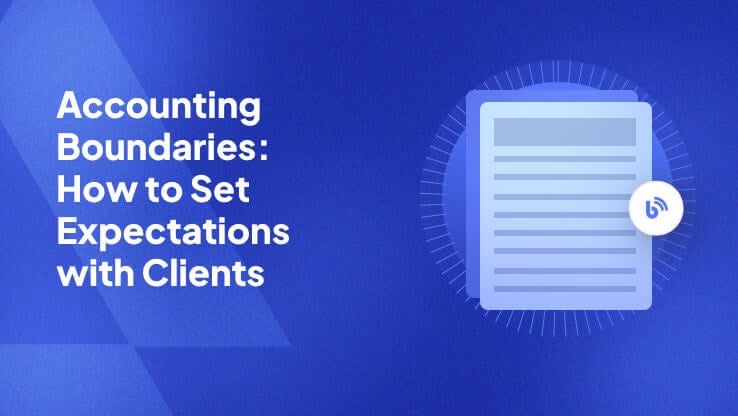© Copyright Aiwyn 2024

Struggling to establish clear boundaries with your clients? It may be hard, but it’s crucial for maintaining professionalism and preserving work-life balance for yourself and your firm. That way, you can ensure the well-being of yourself and your staff while still providing exceptional service. Here are some key guidelines to consider when setting expectations with old and new clients alike:
Establishing a consistent schedule for meetings and client interactions is essential for managing your own time effectively. Make sure to limit the number of meetings per day and allocate time for administrative tasks and breaks. Additionally, inform your clients about your availability, such as your working hours and any scheduled time off. This will help them understand your capacity and availability. All this can be done in the onboarding process.
Set clear communication channels from the beginning. Determine the most suitable methods for communicating with them, such as phone, email, or video conferencing. Be consistent in using these channels and ensure that clients are aware of your response time. Additionally, discourage late-night or weekend communication unless it is urgent or agreed upon in advance.
As an accountant, you are bound to handle sensitive information. It's essential to establish boundaries when it comes to confidentiality and data protection. Clearly communicate to clients the measures you take to protect their data, such as secure cloud storage, firewalls, and regular backups. Reiterate the importance of maintaining confidentiality and remind them not to share any confidential or sensitive information with others.
Clearly define the scope of work you will provide to your clients. Discuss their expectations and ensure that both parties are on the same page regarding deliverables and deadlines. This will help avoid scope creep, where clients request additional work or services that were not part of the original agreement. If additional work is required, discuss any changes to the agreed-upon fee or timeline.
Utilizing automation and AI systems will help assist in interacting with your clients, enabling you to maintain consistent outreach and engagement without becoming overwhelmed. Implement automated reminders and provide these tools to your clients to enhance their experience. This will ultimately lead to a more positive overall interaction.
Clearly communicate your billing and payment procedures to clients. Explain any fees upfront, including hourly charges, retainer fees, or any other payment requirements. Set clear due dates for payments and establish consequences for late payments. Additionally, consider offering multiple payment options to accommodate different clients' preferences.
Establishing clear boundaries should also include discussing the terms of termination and expiration of the working relationship. Discuss when your services will come to an end, whether it's at the end of a specific project or at a predetermined date. Be sure to go over any notice periods or notice requirements, if applicable.
By following these guidelines, you can effectively set boundaries with clients and maintain professional conduct. Remember, setting boundaries is not a sign of weakness but a sign of strength and professionalism.
